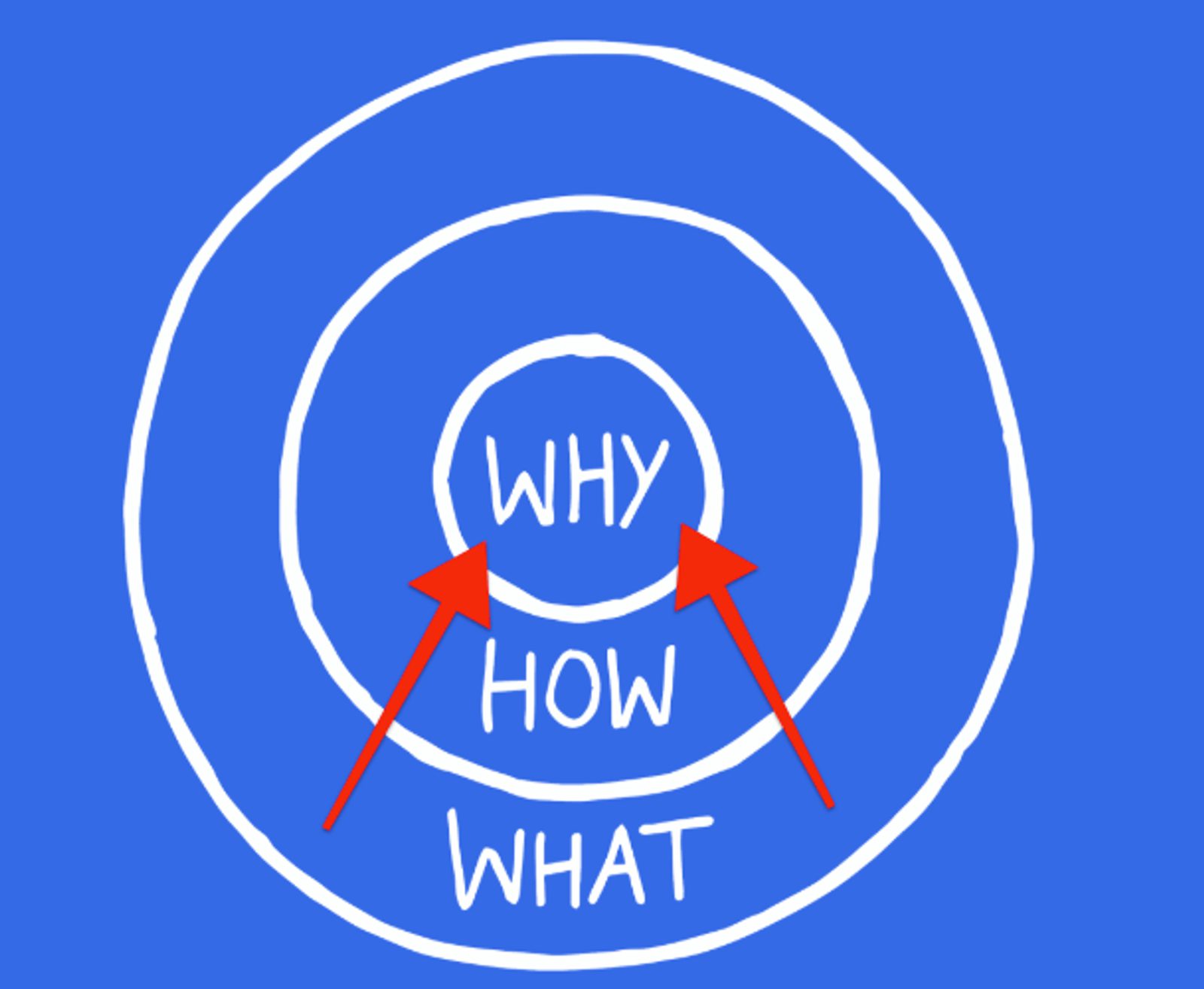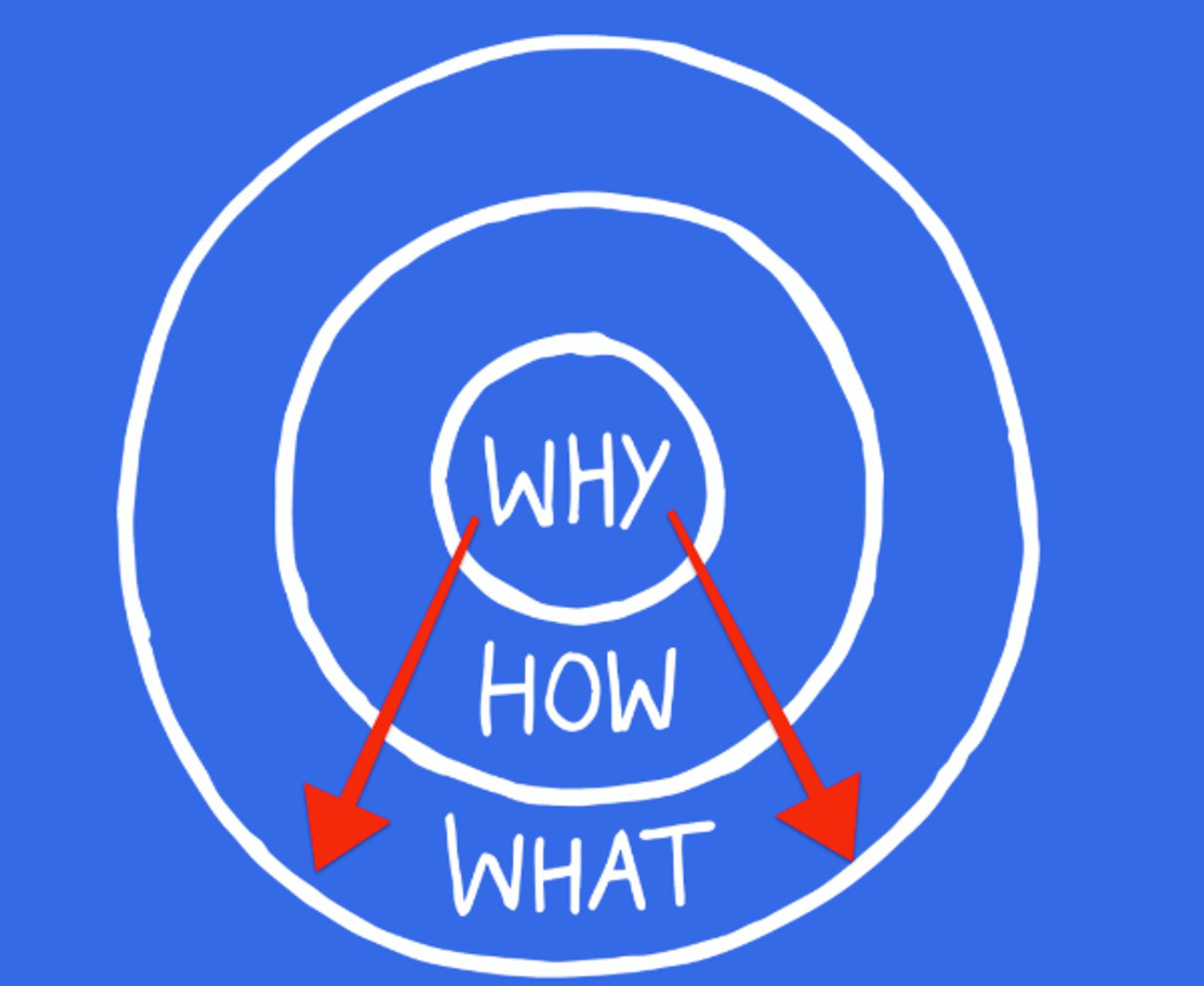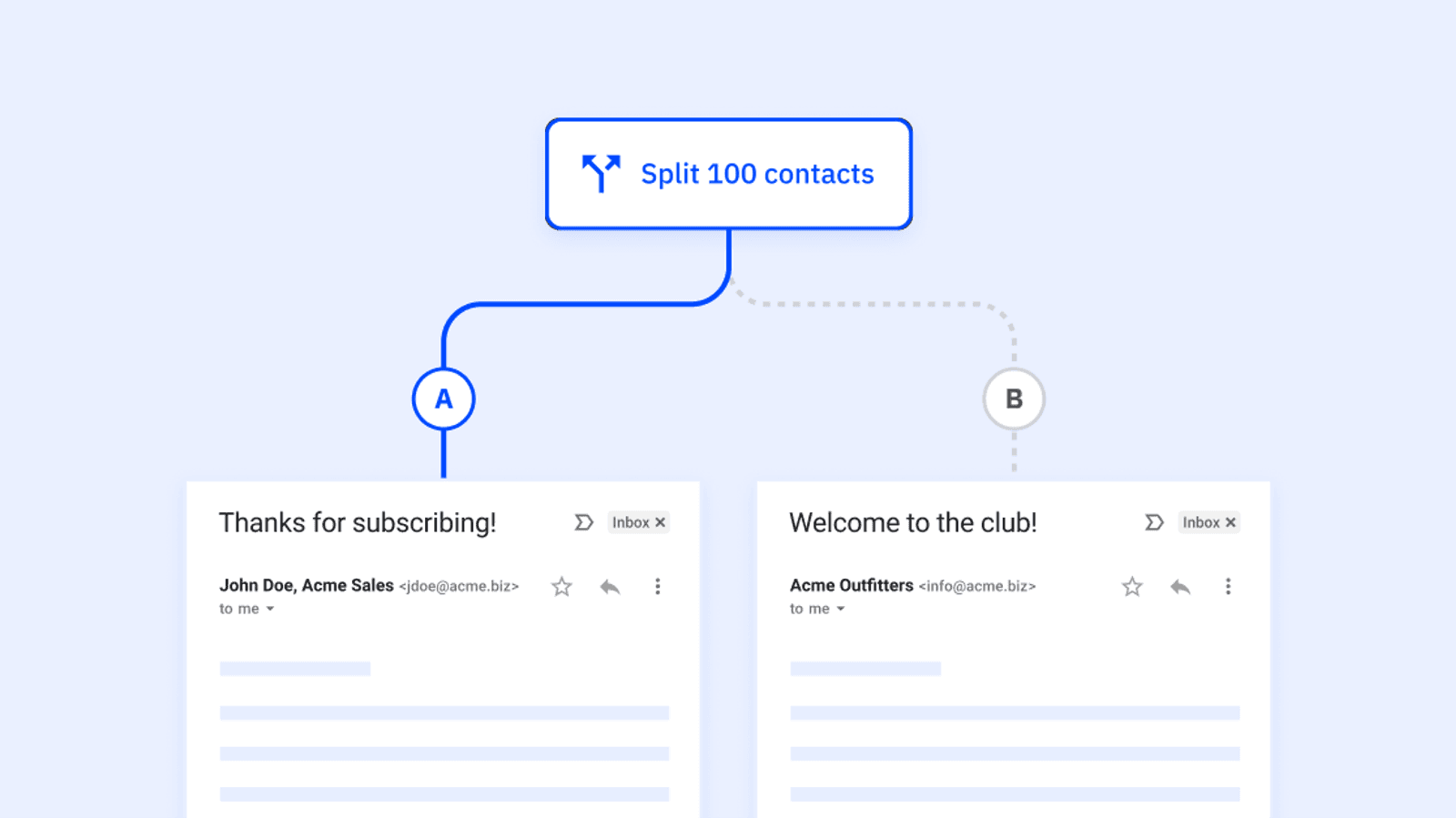What’s the first thing you think of when you picture your business?
Probably the product or service you sell, right? It’s natural. That’s the thing that your marketing and sales teams are talking to your customers about all day long.
So, then…
- Why aren’t you selling more? Your product is good, your teams are motivated, and you know that people need what you have to offer.
- Why are there competitors, big and small, who seem to be able to pull customers away from you?
- Why is it that some leaders and organizations are able to inspire greater loyalty and engagement among their customers and employees alike?
- How are they able to achieve and sustain inordinate amounts of success for years on end?
Whether they realize it or not, all great and inspiring leaders and organizations think, act and communicate in the same way ... and it is the complete opposite from everyone else.
Every single organization on the planet, even our own careers, function on three levels:
- WHAT we do
- HOW we do it
- WHY we do it
When what, how, and why are in alignment, you have a filter that makes it easier to make decisions. This simple idea, created by author Simon Sinek, is the Golden Circle.
It doesn’t really matter what you have – it matters more why you have it. That’s how you give the best value to your customers. The purpose of a business should mean more than just profit.
In this post, we’ll cover what the Golden Circle is and how to use it in business.
What is the Golden Circle?
The Golden Circle is a way to provide the best value you can to your customers by changing the way your business thinks. Simon Sinek introduced this concept in 2009 through a TED talk, How Great Leaders Inspire Action, that has over 48 million views.
Most businesses think like this, from the outside in:

Standard What-How-Why – no gold.
The Golden Circle flips thinking to start from the inside out:

The Golden Circle in all of its impactful glory.
- Why: The belief or the motivation behind your business. This asks the question “what is our organizational purpose?”
- How: The process of delivering that offer
- What: What you offer
The why is the soul of a business. This is your purpose, your belief, the reason why you exist, why you're doing what you're doing now. Businesses need to understand why it is we do what we do.
With that understanding, you can tell a compelling story to your audience of prospects and customers that will help them be driven emotionally by your message, and then decide to be a customer.
In his TED talk, viewed 48 million times, Sinek used Apple as the perfect example for explaining how the Golden Circle works and showing proof of its success.
What computer do you have? An Apple Mac, a PC, a Lenovo? Apple is a pretty popular choice, and it’s no secret that they are a hugely successful, influential company.
But why? Is it because they sell computers, or something else?
You guessed it – something else.
Apple is a trusted company. Their reputation is so much that people no longer question whether or not they should buy their products. Apple is a brand that people trust because they have quality products.
But what makes them so quality? Is it...
- The shiny, silver hardware?
- The multiple apps?
- The ability to store things in the Cloud?
Yes, but also no. Features are great, but people don’t buy features. According to Sinek, people buy experiences and outcomes based on their emotional reactions to a solution that can solve their problems.
People don’t just buy what Apple does (their products), they buy why Apple does it (their motivation and innovation). The Golden Circle method for Apple works like this:

Apple has this down.
- Apple Why: Everything we do, we believe in challenging the status quo and thinking differently.
- Apple How: Our products are beautifully designed and simple to use.
- Apple What: We just happen to sell computers.
Clearly, this method has worked for Apple. It works for ActiveCampaign, and it can work for your business, too.
Many businesses run in the non-Golden Circle way, in that they first come up with what they want to do, then figure out how to do it, and using this info, tell people why they did it.
While this method doesn’t necessarily hurt a business, starting with why has a way of creating personal connections with the people you want to be your customers.
How to use the Golden Circle in business
ActiveCampaign follows the Golden Circle through our pursuit of offering a superb customer experience, and so do our customers – like Brooke Kalisiak of Legacy Physical Therapy.
How does Brooke use the Golden Circle approach to onboard and connect with her physical therapy clients? You could say things like:
- She uses date custom fields
- She has tags based on what condition people come in with
- She sends emails with dynamic content
And yeah, you could say all of that. It's interesting. But clients aren’t coming to her because of those things. They come to her because of why she does what she does.
Physical therapy is an emotional process. There's a lot of fear involved in that experience, and Brooke’s why is to help people feel better and improve their quality of life. Instead of having people just be afraid of coming to her, she has a plan based on her why that starts immediately after someone schedules an appointment.
As soon as they schedule their appointment, she sends them a series of emails that contain information about their condition, the specific therapist who's going to be treating them, and how to find the office right down to a picture of the front door.
Instead of starting with what and all the features, Brooke has taken this experience that could be fearful and said, turn into a moment of empathy and support. She creates an incredible patient experience by really listening to what patients come to her with.
This is why Brook does what she does. How she does it and what comes out of the process is all based on her why.

Companies that use the Golden Circle and start with the why in business have a better chance of creating lifetime value for their customers. Listen to the talk and, just like the game, do as Simon Says – start with the “why.”






